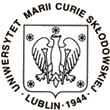

 |
 |
 |
|
Lukasz Swiderski
UW, Warsaw How many fusion barriers?
L.Swiderski, P.Czosnyka, M.Kowalczyk, E.Piasecki, K.Piasecki,
M.Witecki
K.Hagino
J.Jastrzebski, A.Kordyasz, M.Kisielinski
T.Krogulski
M.Mutterer
N.Rowley
W.Trzaska
The height of barrier for fusion of two colliding nuclei is roughly proportional to the product of their atomic numbers Z1Z2. However, it is known that fusion depends also on the structure of colliding nuclei. This fact leads to distribution of fusion barrier heights, which is sometimes clearly structured. As it has already been shown by Timmers et al. [1], one can extract fusion barrier distribution by measuring quasi-elastic scattering cross-sections at backward angles using the following formulae: D_qel=d/dE qel/Rut Such experiments are demanding in relation to beam energy resolution and energy steps control. Therefore measurements of these kinds are usually performed using tandem accelerators, which unfortunately do not allow accelerate ions of noble gases. To solve this problem we have developed a method to measure fusion barrier distributions by means of cyclotron. Using the Warsaw Cyclotron beam and experimental set-up described inr our previous work [2], we have extracted barrier distributions for 20Ne + 112,116,118Sn systems. Results were compared to coupled-channels calculations performed using the CCFULL code. Puzzling disagreement between experiment and theory is observed. References:
[1] H.Timmers et al., A584 (1995) 190
*** download abstract in pdf file ***
| ||
Last modificated: 2003-09-22

